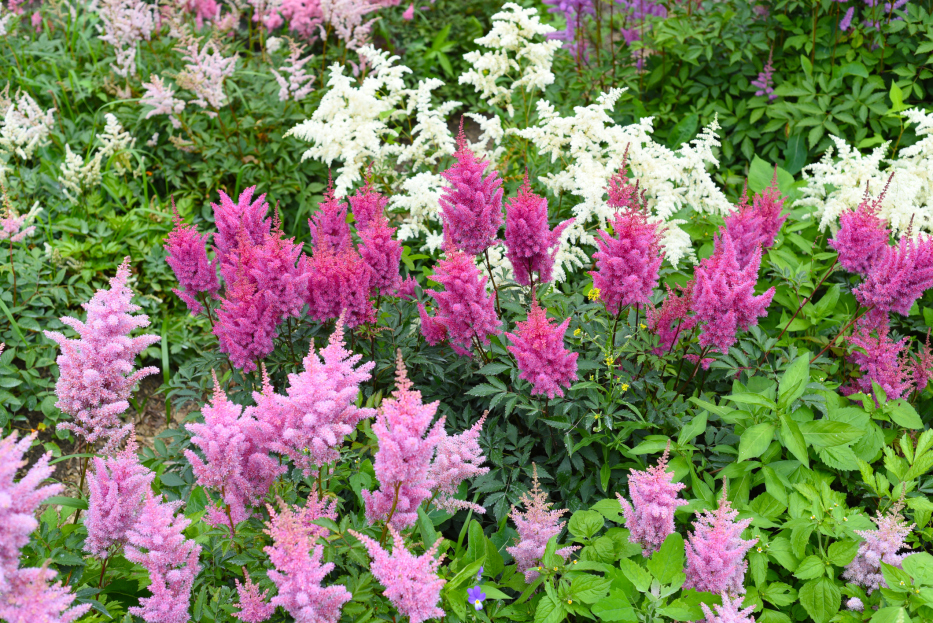
Astilbe is a stunning perennial plant known for its feathery, plume-like flowers and lush foliage. While it’s more commonly grown outdoors in gardens, Astilbe can also be successfully grown indoors as a houseplant with the right care. This plant thrives in shaded areas, making it an excellent choice for homes with lower light conditions. Here’s a comprehensive guide to help you care for your Astilbe houseplant.
Astilbe prefers indirect or filtered light, which makes it an ideal plant for low-light indoor environments. Direct sunlight can scorch its delicate leaves, so it's best to place your Astilbe in a location where it can receive bright, but indirect light. A north or east-facing window is perfect, as it will provide the necessary light without the risk of burning the leaves.
If you're growing Astilbe in a room with limited natural light, you can use a grow light to supplement its light requirements. This will help encourage healthy growth and vibrant blooms.
Astilbe prefers consistently moist soil, but it’s important to not let your plant sit in standing water, as this can lead to root rot. Water your Astilbe regularly, ensuring that the soil remains evenly moist. The top inch of soil should feel damp to the touch, but not soggy.
In the warmer months, you may need to water more frequently, especially if the plant is in a warm room. During the winter months, when the plant is less active, you can reduce watering slightly, but still make sure the soil does not dry out completely.
To avoid overwatering, ensure that your pot has good drainage to allow excess water to escape. It’s also a good idea to use a saucer under the pot to catch any water that drains through.
Astilbe prefers well-draining, rich, and slightly acidic soil. A peat-based potting mix with added perlite or sand for drainage works best. You can also add some compost to enrich the soil and provide additional nutrients for healthy growth.
When potting your Astilbe, choose a container with drainage holes to prevent water from collecting at the bottom of the pot. Astilbe can be repotted every couple of years, especially if it has outgrown its current pot or if the soil has become compacted. Be gentle when repotting to avoid damaging the plant's roots.
Astilbe thrives in cooler temperatures, ideally between 60°F and 70°F (15°C to 21°C). It can tolerate slightly warmer temperatures, but it’s important to avoid placing the plant in a hot room, as this can stress it and affect its growth.
Astilbe also appreciates higher humidity levels. If your home is dry, especially during the winter months, you can increase humidity around the plant by placing a humidity tray near it or misting the leaves regularly. Alternatively, you can group your Astilbe with other plants to create a more humid microenvironment.
Astilbe is a relatively low-maintenance plant when it comes to fertilization, However, feeding it occasionally during the growing season (spring and summer) can help encourage healthy growth and vibrant blooms. Use a balanced, water-soluble fertilizer, diluted to half strength, and apply every 4-6 weeks.
During the fall and winter months, when the plant is not actively growing, you can reduce or stop fertilizing altogether. Over-fertilizing during the dormant period can stress the plant and cause it to become leggy or weak.
To keep your Astilbe looking its best, it's important to remove any spent flowers or dead leaves. Deadheading, or cutting off the faded flowers, encourages the plant to put its energy into producing new growth rather than seed production. This will also help maintain the plant's appearance.
In addition to deadheading, you can prune any yellowing or damaged leaves to keep the plant looking tidy. Be sure to use clean, sharp scissors or pruning shears to avoid spreading any potential diseases.
Astilbes are relatively pest-resistant, but they can occasionally attract aphids, spider mites, or mealybugs. If you notice small pests on the leaves or a sticky residue, inspect the plant closely. You can treat pests by wiping the leaves with a damp cloth or using insecticidal soap or neem oil.
Astilbes are also susceptible to fungal diseases, especially if they are overwatered or if the leaves stay damp for too long. To prevent fungal infections, avoid overhead watering and ensure the plant has good air circulation. If you notice mold or mildew, remove the affected leaves and treat the plant with a fungicide.
Astilbe is a perennial plant, which means it goes dormant in the winter. During this period, it’s important to reduce watering and stop fertilizing. The plant may lose some of its leaves, but don’t be alarmed – this is normal.
If your Astilbe is growing indoors, it will likely stay in its dormant state throughout the winter. Once the weather warms up in spring, you can resume regular watering and fertilizing to encourage new growth.
Astilbe is non-toxic to pets, making it a safe option for homes with cats and dogs. However, as with any plant, it's still a good idea to keep it out of reach of curious pets, as ingesting large quantities of any plant can cause digestive upset.